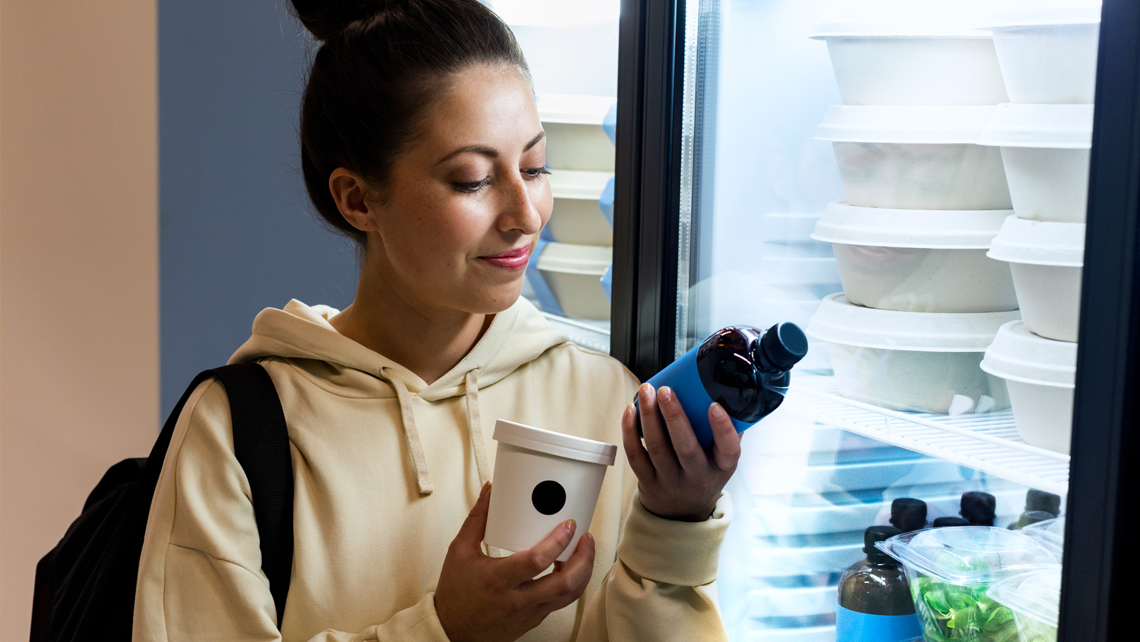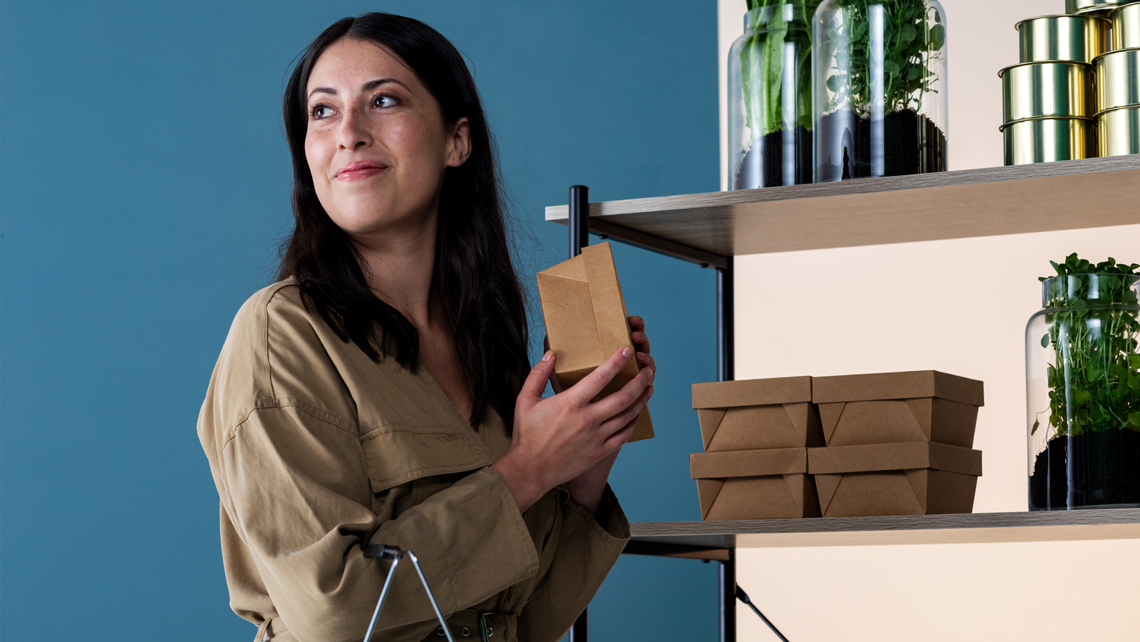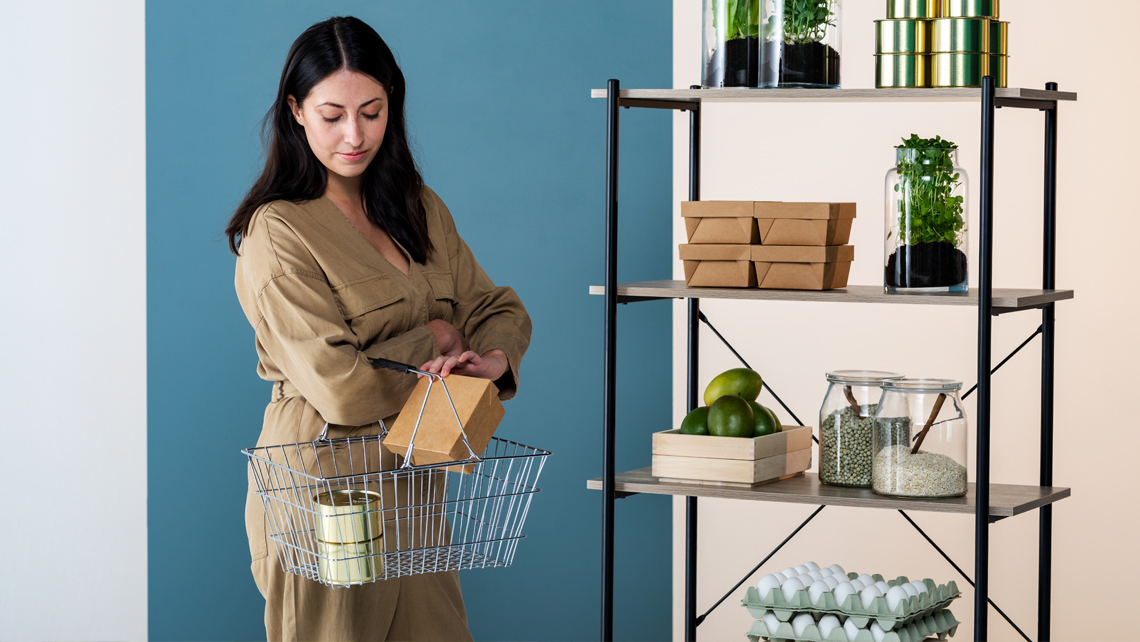Individualism to the max
In one of the scenarios, titled “Individualism to the max”, consumers make their decisions in front of the grocery store shelves driven by their personal values and beliefs. The food – and packaging – we choose is a way of expressing who we are, and food consumption is an important part of our identity building.
The defining features of this future scenario could be summarized as:
- Fragmentation of the marketplace
- Identity building through consumption habits
- Niche offerings to every taste
- Food packaging as a means of brand expression
The food – and packaging – we choose is a way of expressing who we are, and food consumption is an important part of our identity building.
Creating experiences and strong bonds with packaging
In this scenario, the food industry fragments to serve a vast variety of consumer tastes and interests. There will be niche extremes – focusing on e.g. fitness, vegan or luxury lifestyles or even patriotism through food choices, as some of the expert interviews suggest. Consumers driven by environmental values and focused on fighting climate change are a group among others, but they are not the majority.
Food brands and retail need to cater for the strong emotions that consumers have toward food. It’ll be a hard race to capture the consumers’ imagination and brands rely on unique and innovative packaging materials that help their food products stand out from on the shelf.
Food brands and retail need to cater for the strong emotions that consumers have toward food. It’ll be a hard race to capture the consumers’ imagination.
As in this scenario consumers are driven by the need to have a strong bond with the brand, brands will differentiate themselves through storytelling and powerful, perhaps often excessive experiences. Packaging materials will be used in high volumes and varying mixes, and brand owners are even willing to make material choices that would be considered “bad” in today’s sustainability focused market.
What would this development mean for the packaging industry in general and the food service paper and board producers in particular? “The most important feature of food packaging, still, is to protect the packaged product and also the consumer – from hot liquids, grease and similar. I doubt this will ever change,” says Antti Matula, who is leading the global product lines and business development for the Pulp and Paper segment at Kemira.
“Currently, the fiber-based materials have great momentum with the strong anti-plastic movement, but as this scenario suggests, other packaging materials might also be used abundantly. Another aspect in this scenario is the increased focus on brand and the essential role packaging plays. If consumers want to convey a strong message with their purchasing choices, the packaging needs to deliver both the experience and the information to support purchasing decisions. This translates into increased requirements for printability and brand expression on packaging, and creates the need for new digital solutions,” Matula continues.
Where does regulation fit in?
The versatile packaging mix would mean challenges for recycling, and in addition, the consumers described in this future scenario can’t be bothered to put in the effort to recycle food packaging. A curiosity in this scenario is that regulation would not have a significant role in shaping the market. Lately however, we have witnessed quite the contrary with increased regulatory guidance over food and its packaging.
“The operating environment described in this future scenario would be a complex one. Experience-seeking consumers are creating the demand, but the brand owners are the ones who are driving the market. Personally, I do believe that there would still need to be a counterforce to the heterogenous consumer market, and regulation and policymakers would continue to play a role in setting the overall direction for the food packaging industry,” Matula says.
For example, the current figures on the amount of plastic packaging ending up in waste or the share of food that is wasted every year compel action. According to Matula, in this future, fiber-based materials can be used for a broader set of applications than today, but plastic will also still have its place, either through improved recyclability or waste reuse.
Overall, there are more opportunities than challenges in this scenario for the fiber-based packaging value chain. It requires collaboration and innovation to take advantage of those.


